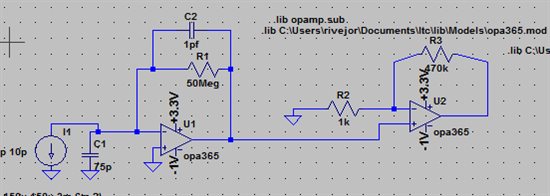Hello,
I am simulating a photodiode amp with 50Meg feedback resistor. Photodiode modeled as 10pA
current source in parallel with 75pf cap to GND. Current source in parallel with
cap are connected between inverting terminal of op-amp and gnd.
Non-inverting terminal connected to ground. Supplies set to +3 and -1V.
Get larger error (from ideal) than when supplies are +/-2.5V.
Is this an OP365 model issue, or is this a real world phenomenon?.
If so, what is it due to? The signals I'm dealing with are well within the
linear range of the op-amp (or so I think, ;-))
Thanks for the help.
Jorge



